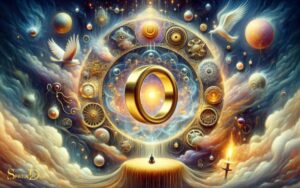Lord of the Rings Spiritual Meaning: Explaind Everything!
The Lord of the Rings series, authored by J.R.R. Tolkien, is imbued with profound spiritual meanings that reflect the author’s personal beliefs and the cultural milieu in which he wrote.
Themes such as the struggle between good and evil, the power of temptation, the significance of sacrifice, and the importance of hope and redemption resonate throughout the narrative and have deep spiritual implications for many readers.
Behind the epic fantasy adventure of “The Lord of the Rings,” there lies a tapestry of spiritual and philosophical themes.
Here are some key aspects:
“Lord of the Rings” offers a rich allegory that can provide spiritual insights and inspiration, inviting readers to reflect on the underlying moral and philosophical questions of their own journey through life.
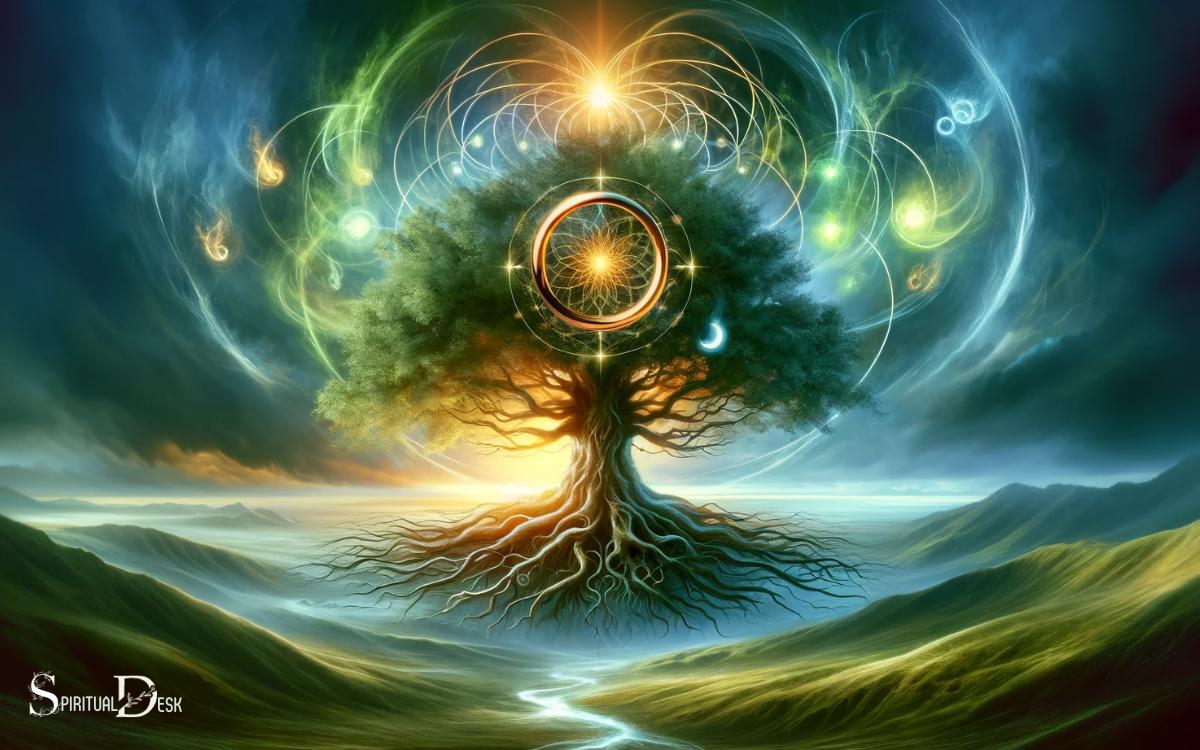
Key Takeaway
lord of the rings spirituality
The spirituality depicted in J.R.R. Tolkien’s “The Lord of the Rings” is a central and complex theme that permeates the entire narrative.
While Tolkien did not write “The Lord of the Rings” as a religious or explicitly spiritual text, his Catholic faith and academic background in philology undoubtedly influenced the spiritual elements in his work.
Spirituality in “The Lord of the Rings”:
Creation Myth:
Tolkien’s fictional world, Middle-earth, has its own creation myth that features Eru Il�vatar, the supreme deity, and the divine beings known as the Valar and Maiar.
Eru is the ultimate source of all existence, and the Valar and Maiar are subordinate divine beings who assist in the shaping and governing of the world. This creation myth establishes a spiritual foundation for the entire narrative.
The Struggle Between Good and Evil:
One of the most prominent spiritual themes in “The Lord of the Rings” is the struggle between good and evil.
The Dark Lord Sauron represents the embodiment of evil, seeking to dominate Middle-earth through the power of the One Ring, while the Free Peoples of Middle-earth, including Frodo, Gandalf, Aragorn, and others, represent the forces of good.
This epic battle between light and darkness reflects the age-old theme of spiritual warfare.
Nature and Creation:
Tolkien’s deep appreciation for nature and creation is evident throughout the story. The Shire and Lothl�rien, for example, are depicted as idyllic places where the natural world is respected and preserved.
This reverence for the natural world can be seen as a reflection of Tolkien’s own spiritual connection to creation.
Themes of Hope and Providence:
Throughout the story, characters often find hope in seemingly hopeless situations, and events unfold in ways that suggest a guiding hand or providence at work.
This theme underscores the idea that there is a higher purpose or plan in the world of Middle-earth.
It’s important to note that while “The Lord of the Rings” draws on various spiritual themes and influences, Tolkien intended the story to be a work of fiction and not a religious allegory.
However, readers have often found deep spiritual and moral resonances within the text, making it a rich source for exploring spiritual themes and questions.
J.R.R. Tolkien�s Spiritual Influences
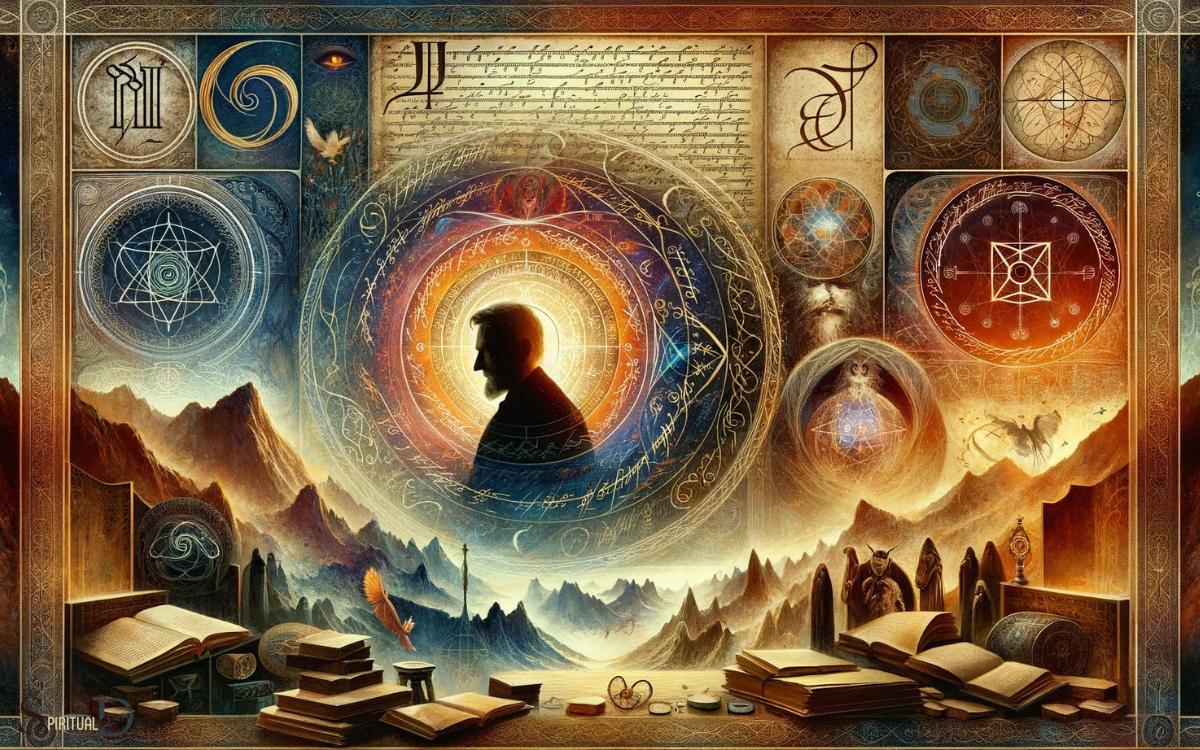
J.R.R. Tolkien�s spiritual influences significantly shaped the themes and messages within the Lord of the Rings trilogy.
As a devout Catholic, Tolkien infused his beliefs into his work, subtly weaving spiritual elements throughout the narrative.
The battle between good and evil, the importance of friendship and loyalty, and the idea of sacrificial love are all central themes that reflect Tolkien�s spiritual worldview.
The concept of hope in the face of overwhelming darkness is also a recurring motif, mirroring Tolkien�s faith in the ultimate triumph of good.
Additionally, Tolkien�s creation of a richly detailed, morally complex world reflects his belief in the importance of free will and the consequences of our choices.
These spiritual influences add depth and meaning to the story, resonating with readers on a profound level.
The Battle of Good Vs. Evil

Infusing the Lord of the Rings with spiritual depth, I explore the battle of good versus evil, delving into the timeless struggle that underpins the narrative.
The central theme of the battle between good and evil is a reflection of the fundamental spiritual struggle in the world. It resonates with audiences because it mirrors the ethical and moral dilemmas we face in our own lives.
The characters in the story represent the different choices we encounter when navigating this battle.
Frodo�s resilience against the corrupting power of the One Ring embodies the struggle to resist temptation and corruption.
The epic battles between the forces of good and evil illustrate the enduring nature of this conflict. Ultimately, the Lord of the Rings reminds us that the choices we make in the face of adversity shape our spiritual journey.
The Quest for Power and Corruption
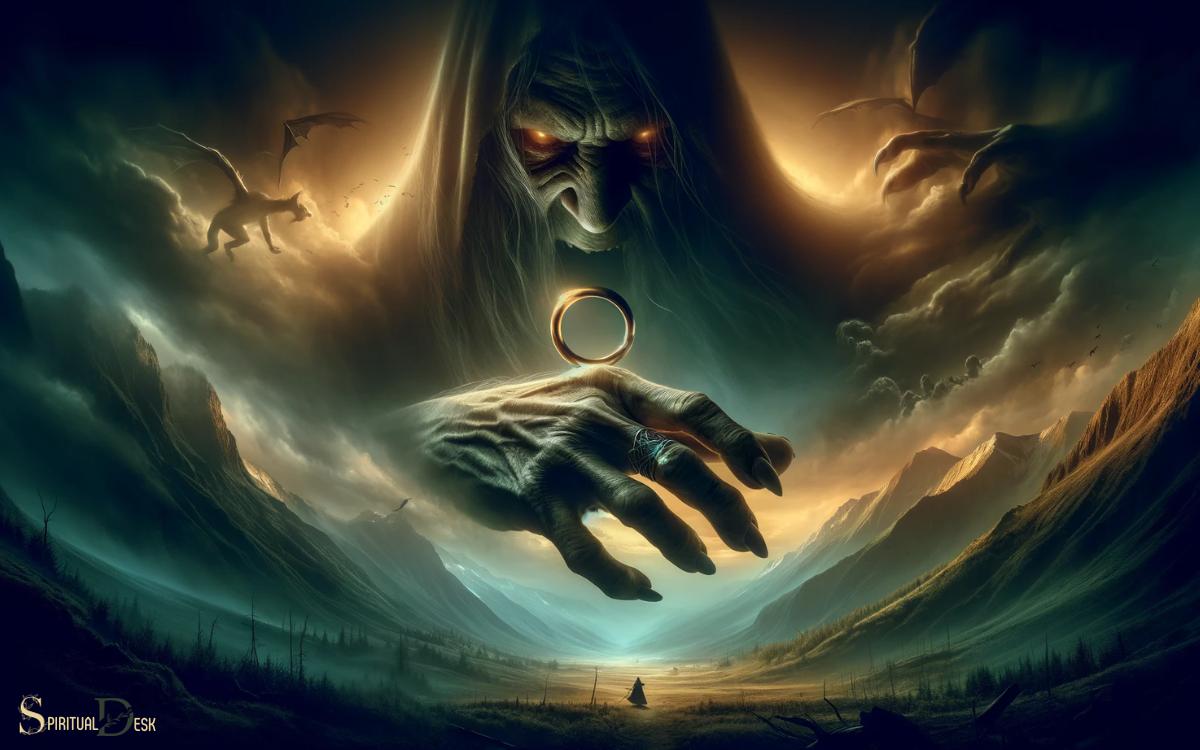
In exploring the spiritual meaning of Lord of the Rings, I find that the quest for power and the insidious nature of corruption are central themes that resonate with our own struggles.
The desire for power can lead individuals to make choices that compromise their values, ultimately leading to their downfall.
This is illustrated through characters like Saruman and Boromir, who are corrupted by the allure of power. Their stories serve as cautionary tales, reminding us of the dangers of unchecked ambition.
Moreover, the One Ring itself symbolizes the corrupting influence of power, as it tempts and consumes those who seek to wield it.
The Lord of the Rings reminds us of the importance of humility and moral integrity in the face of power, urging us to resist the allure of corruption.
The Fellowship and Friendship
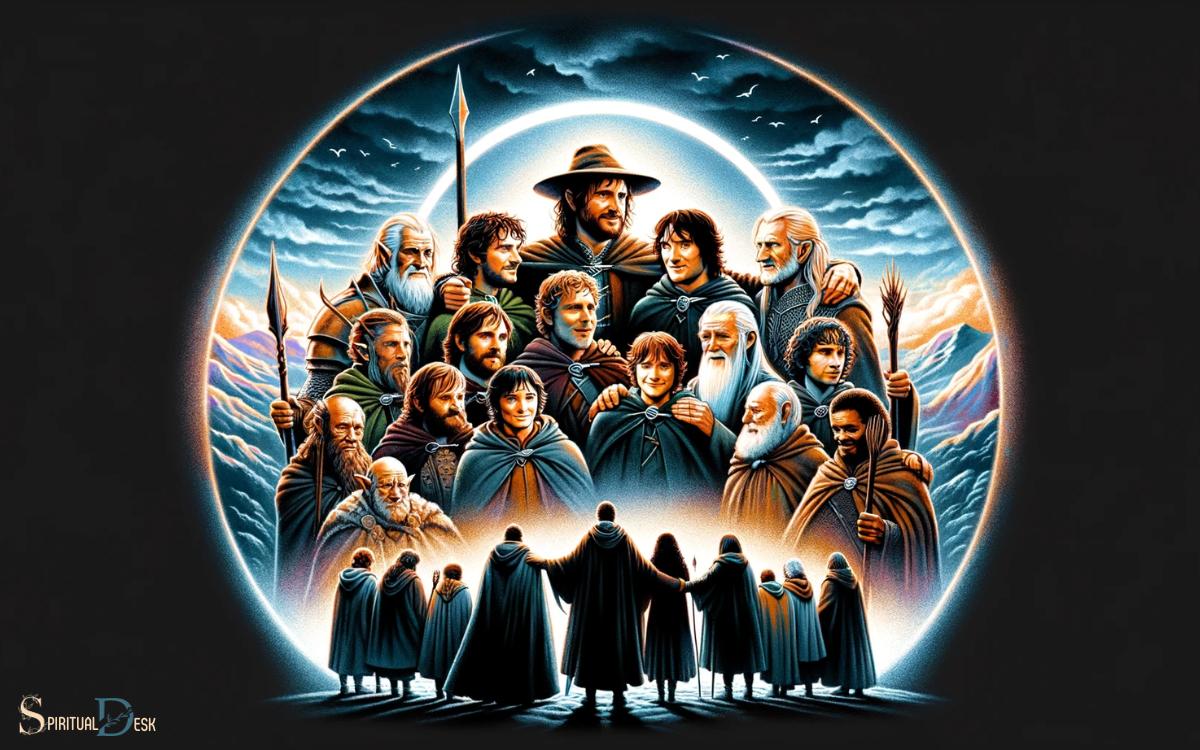
When it comes to �The Fellowship and Friendship� in the Lord of the Rings, I find the themes of loyalty in adversity and sacrifice for companions particularly compelling.
These points showcase the depth of the bonds formed among the characters and serve as powerful examples of true friendship.
Exploring how these themes are portrayed throughout the story can offer valuable insights into the spiritual significance of friendship and camaraderie.
Loyalty in Adversity
One can see the true test of loyalty in The Fellowship�s unwavering support for each other during times of adversity.
- The bond between Frodo and Sam is a shining example of unwavering loyalty, as Sam refuses to leave Frodo�s side, even in the face of great danger.
- Aragorn, Legolas, and Gimli exemplify loyalty through their steadfast dedication to protecting Frodo and the mission, despite facing insurmountable odds.
- Merry and Pippin�s loyalty is demonstrated through their willingness to stand by their friends, even when captured by the enemy.
- Gandalf�s sacrifice in Moria reflects his unwavering loyalty to the Fellowship, as he falls so they can escape. Loyalty in adversity is a central theme in The Lord of the Rings, showcasing the strength and depth of true friendship.
As we explore the theme of loyalty, it becomes evident that sacrifice for companions is another crucial aspect of The Fellowship�s journey.
Sacrifice for Companions
Sacrificing for companions in The Lord of the Rings demonstrates the depth of true friendship and the unwavering loyalty within the Fellowship.
The members of the Fellowship consistently put the well-being of their companions before their own, showing an extraordinary level of selflessness and devotion.
Frodo carries the burden of the One Ring, risking his life to protect his friends from its corrupting influence.
Aragorn, Legolas, and Gimli accompany Frodo on his dangerous quest, forsaking their own safety for the greater good.
Gandalf falls in battle to save the Fellowship from the Balrog, and Boromir sacrifices himself to protect Merry and Pippin.
These acts of sacrifice highlight the profound bond of friendship and the willingness to lay down one�s life for the sake of others, embodying the essence of true companionship.
Sacrifice and Redemption
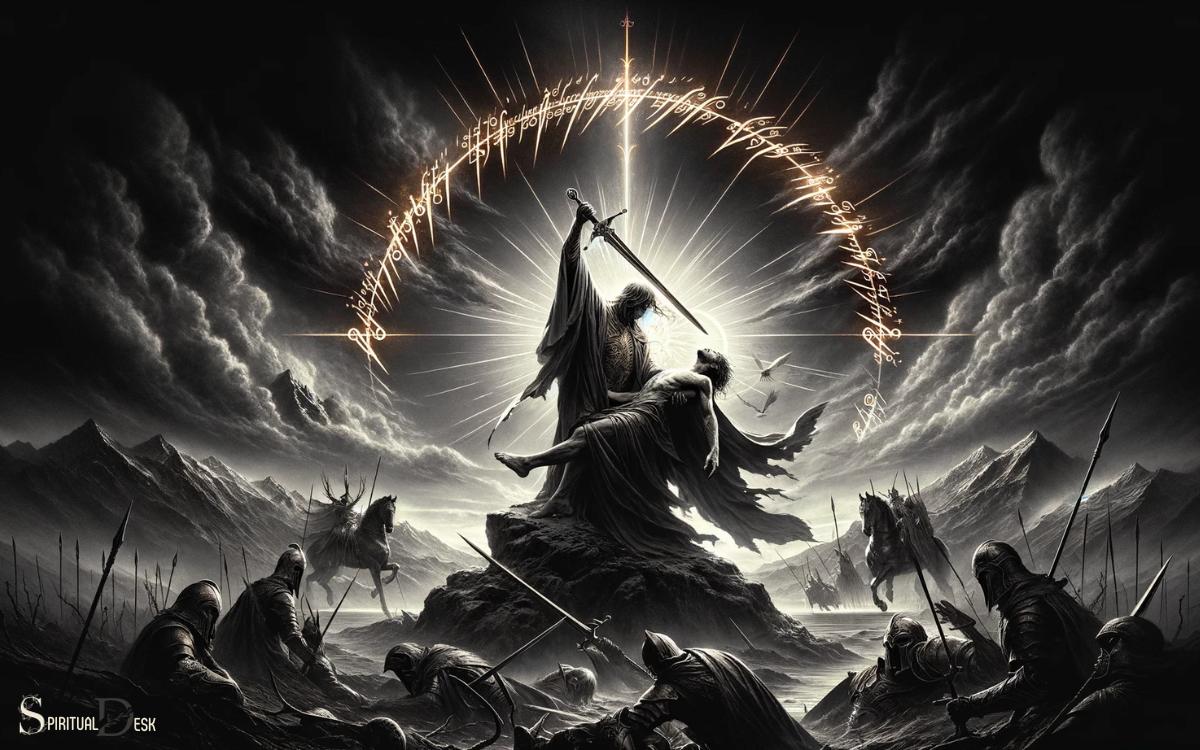
I�ll start by highlighting the profound themes of sacrifice and redemption in the Lord of the Rings. We�ll explore how characters like Frodo, Aragorn, and Gollum embody these themes through their actions and choices.
These elements add depth and spiritual significance to the narrative, making it a timeless and resonant story for many.
Frodo�s Burden and Redemption
How did Frodo�s burden of carrying the One Ring lead to his redemption in The Lord of the Rings?
- Corruption of the Ring: Carrying the Ring exposed Frodo to its corrupting influence, testing his will and virtue.
- Sacrificial Journey: Despite the overwhelming odds, Frodo willingly undertook the perilous journey to Mount Doom, demonstrating selflessness and courage.
- Redemption through Sacrifice: By resisting the Ring�s allure and ultimately choosing to destroy it, Frodo redeemed himself and saved Middle-earth from darkness.
- Personal Transformation: Through his sacrifice, Frodo grew in wisdom, humility, and compassion, becoming an example of true heroism.
Frodo�s burden of carrying the One Ring was a path of sacrifice that ultimately led to his redemption, portraying the timeless theme of selfless heroism and the triumph of good over evil.
Aragorn�s Sacrificial Leadership
Continuing from Frodo�s journey of sacrifice and redemption, Aragorn�s sacrificial leadership in The Lord of the Rings exemplifies the enduring theme of selfless heroism and the ultimate triumph of good over evil.
Aragorn�s willingness to put the needs of others before his own, even at the cost of personal sacrifice, embodies the epitome of noble leadership.
His journey is marked by numerous instances where he risks his own life and status for the greater good, showcasing the qualities of humility, courage, and selflessness.
Despite the hardships and dangers he faces, Aragorn remains dedicated to his duty and the protection of Middle-earth.
His sacrificial leadership serves as a beacon of hope, inspiring others to rise above their fears and doubts.
Aragorn�s unwavering commitment to the cause sets a powerful example of leadership based on sacrificial love and redemption, echoing the underlying spiritual truths woven throughout the narrative.
As we delve into Aragorn�s sacrificial leadership, it�s essential to explore another pivotal character whose actions embody the theme of redemptive sacrifice – Gollum.
Gollum�s Redemptive Sacrifice
Exploring the theme of redemptive sacrifice in The Lord of the Rings, Gollum�s pivotal role exemplifies the complex interplay of sacrifice and redemption within the narrative.
- Corruption and Redemption: Gollum, once a hobbit named Smeagol, becomes consumed by the power of the One Ring. His journey reflects the struggle between good and evil within oneself.
- The Power of Mercy: Despite Gollum�s treachery, Frodo shows him mercy, which ultimately leads to Gollum�s redemptive actions.
- Self-Sacrifice: Gollum�s final act of biting off Frodo�s finger, thus destroying the Ring, is a sacrificial act that ultimately leads to the salvation of Middle-earth.
- Redemption through Sacrifice: Gollum�s sacrifice not only redeems himself but also plays a crucial role in the larger redemption of Middle-earth.
Gollum�s redemptive sacrifice serves as a powerful illustration of the interconnected themes of sacrifice and redemption in The Lord of the Rings, paving the way for the exploration of the role of providence and hope in the narrative.
The Role of Providence and Hope
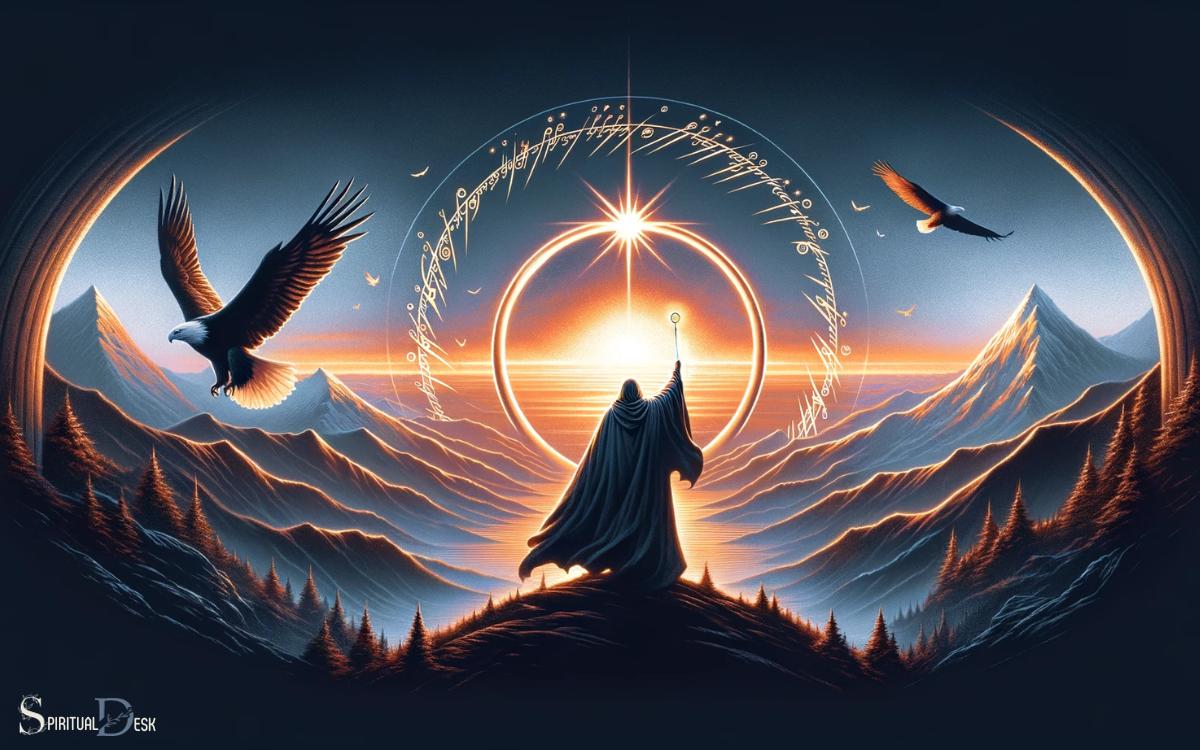
In my interpretation of �Lord of the Rings,� the theme of providence and hope resonates deeply within me.
Throughout the story, the characters face seemingly insurmountable challenges, yet they continue to press forward with hope in their hearts.
This speaks to the idea that even in the darkest of times, there is always a glimmer of hope, a guiding light that leads the way.
The concept of providence, or the protective care of a higher power, is also prevalent in the narrative. It emphasizes the belief that there is a larger, unseen force at work, guiding the characters and events towards a greater purpose.
This theme serves as a powerful reminder that, no matter how dire the circumstances may seem, there is always the possibility of a positive outcome.
The Journey and Transformation
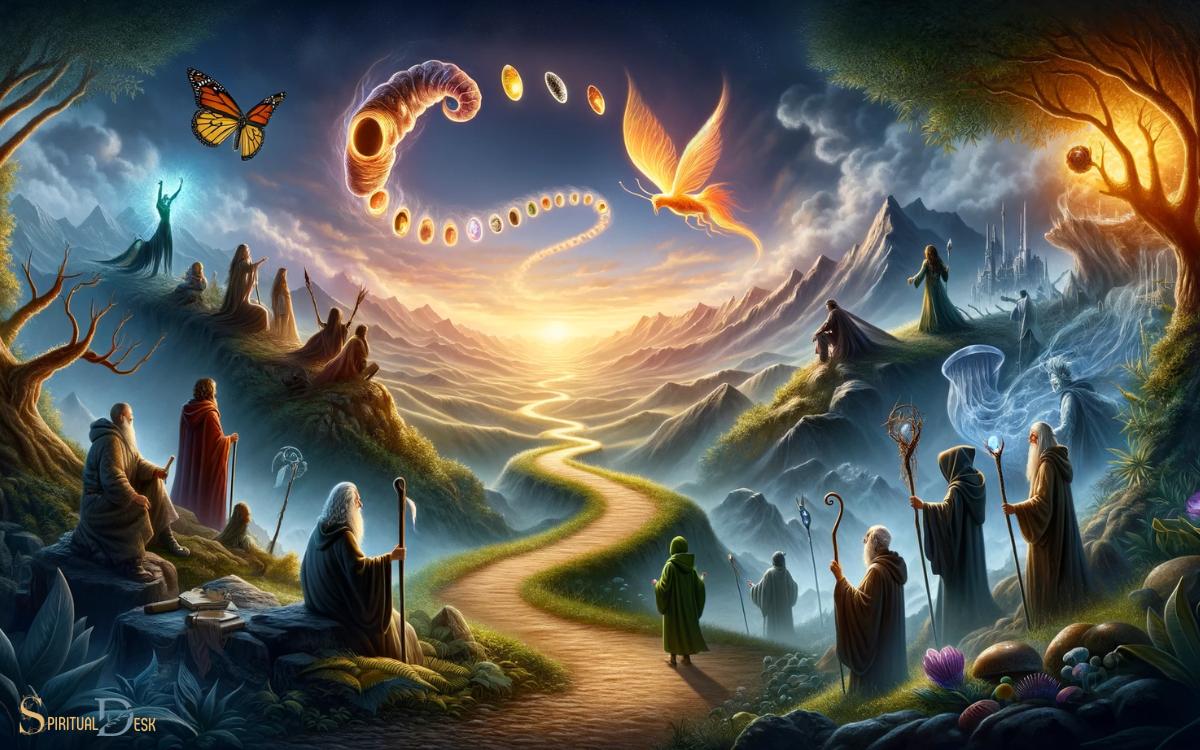
As I delve into the spiritual significance of �Lord of the Rings�, the journey and transformation of the characters exemplify profound themes of resilience and personal growth.
- Self-Discovery: The characters, such as Frodo and Aragorn, undergo inner journeys that lead to self-discovery and a deeper understanding of their purpose.
- Overcoming Adversity: The trials and tribulations faced by the characters mirror the real-life struggles we encounter, showcasing the strength found in perseverance and determination.
- Redemption and Forgiveness: Characters like Gollum demonstrate the potential for redemption and the power of forgiveness, highlighting the transformative nature of these virtues.
- Evolution of Character: The evolution of characters from their initial states to their transformed selves signifies the potential for personal growth, inspiring viewers to embrace change and development in their own lives.
The journey and transformation in �Lord of the Rings� serve as a powerful allegory for the human experience, encouraging us to embark on our own paths of self-discovery and growth.
Conclusion
The spiritual themes in Lord of the Rings resonate deeply with many readers, including myself. The battle of good versus evil, the quest for power and corruption, and the importance of friendship and sacrifice all speak to universal truths.
It�s no coincidence that these themes have stood the test of time and continue to captivate audiences, as they reflect our own struggles and triumphs in the journey of life.




